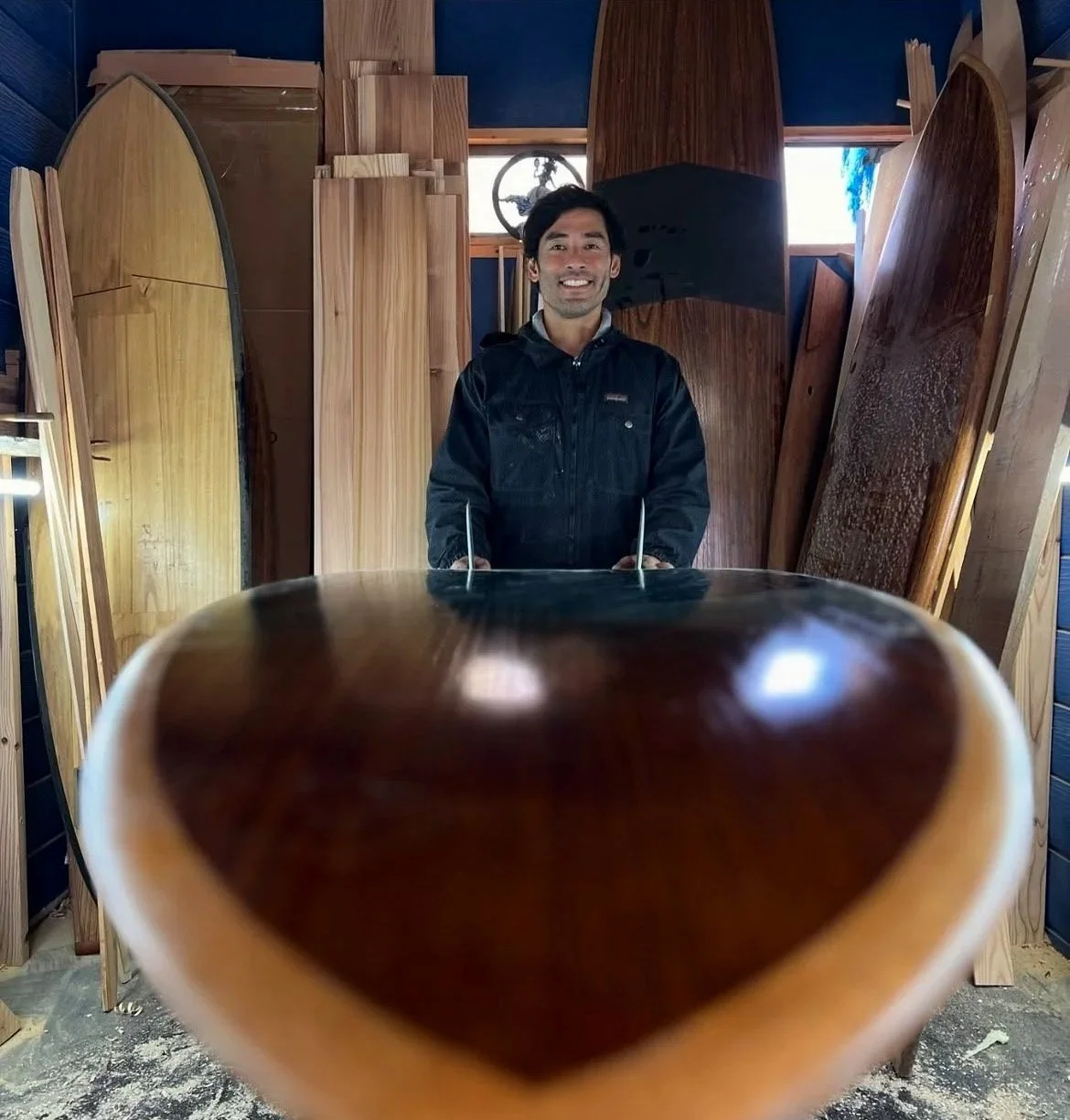About
I grew up in Guarujá, a small coastal town near São Paulo, surrounded by the ocean and a deep fascination with surfboards. Since I was a child, I wanted to become a shaper. I started repairing boards, but because of my asthma, I couldn’t work with polyurethane resin. That limitation turned into a new direction — one that would define my path.
Inspired by my uncle’s pottery studio — and by the wooden furniture he had built himself — I decided to make my own surfboard from wood. In 2006, I began shaping a hollow bamboo board. It took me a year and a half to finish, borrowing power tools from a local home center every day. That process taught me patience, rhythm, and the beauty of working with natural materials.
In 2008, I joined the Alternative Surfboards Festival in Shizuoka, Japan, and met master shaper Endo Yuichi the following year, who introduced me to Alaia surfboards and traditional Japanese hand tools. Back in Brazil, I continued shaping Alaias and began creating wooden handplanes — a design that would become uniquely my own.
In 2012, I traveled to Peru with The Surfer’s Journal to learn about Caballitos de Totora — ancient reed watercrafts used by Peruvian fishermen for thousands of years. That encounter deepened my respect for the long lineage of surfcraft across cultures.
The next year, I exhibited at the Byron Bay Surf Festival, giving workshops and meeting shapers Bob McTavish and Tom Wegener, both of whom became mentors and friends. From them, I learned not only shaping techniques, but also how surfing and craftsmanship intertwine as a way of life.
I returned to Japan in 2018 to study traditional woodworking under Takami Kawai in Kyoto. It was the first time I was truly introduced to the Japanese philosophy of craft — of respecting and maintaining the tools and materials one works with. Around that time, I met Takuya Tsutsumi, who opened my eyes to Urushi, Japanese natural lacquer, and its spiritual and functional role in craft. To this day, Urushi remains an essential part of my work, symbolizing both protection and continuity.
Lasca Woodworks grew from this journey — from the traditions of Brazil, Japan, and Peru, and from the lessons passed down through my family. I carry with me the organic sensibility I first learned watching my uncle shape clay, and I apply it to each board I build. Every surfboard is a dialogue between cultures, materials, and the ocean — crafted to perform, but also to flow.
Selected Exhibitions & Features
The Alley Fish Fry Japan Festival (2008)
Jazzy Way to and a Day II Exhibition (2012)
The Surfer’s Journal Brazil (2012)
Byron Bay Surf Festival (2013)
The Board Trader Show — Best Reinterpretation of Finless Boards (2016)
Hidrodinâmica, Canal OFF (2018)
BLUE Magazine No. 91 (2021)
SIITA Project (2021~)
Greenroom Festival Japan (2022)
Chasing Waves, Disney+ (2022)
Kyoto Museum of Craft and Design (2023)
Japan House São Paulo, Brasil (2025)
Osaka Expo (2025)


